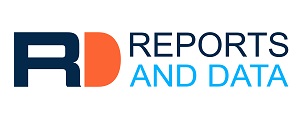Chelating Agents Market Set to Reach USD 10.5 Billion by 2034 Driven by Sustainability and Rising Water Treatment Demand

Reports And Data
Chelating Agents Market is on a strong growth trajectory, with market size projected to increase from USD 6.5 billion in 2024 to USD 10.5 billion by 2034
VANCOUVER, BRITISH COLUMBIA, CANADA, August 18, 2025 /EINPresswire.com/ -- The global Chelating Agents Market is on a strong growth trajectory, with market size projected to increase from USD 6.5 billion in 2024 to USD 10.5 billion by 2034, according to new industry research. This expansion is being fueled by stricter environmental regulations, rising demand for eco-friendly products, and growing use across industries such as water treatment and agriculture.A key factor driving market growth is the shift toward sustainability. Governments worldwide are tightening rules on chemical use, encouraging industries to adopt biodegradable chelating agents. In Europe, for example, the REACH regulation is pushing companies to move toward safer, greener formulations. Supporting this transition, research and development spending on green chemistry has grown significantly, with the American Chemical Society reporting a 68% rise in related R&D investment.
You Can Download Free Sample PDF Copy Of This Report At: https://www.reportsanddata.com/download-free-sample/001270
Water treatment needs are another major growth driver. Chelating agents are essential in removing metal ions from water, making purification more effective. With the global water treatment industry expected to grow at an annual rate of 6.5%, demand for chelating agents is set to rise in parallel. Agriculture also represents an important opportunity, especially in emerging economies. Chelating agents help improve soil quality and crop yields by enhancing nutrient availability, aligning with government initiatives like the USDA’s billion-dollar investment in climate-smart farming.
Top 10 Companies
BASF SE: Leading with a focus on sustainable product development and strategic partnerships.
AkzoNobel N.V.: Strong market position through innovation and eco-friendly formulations.
Dow Chemical Company: Emphasizing R&D and expanding production capacities.
Nouryon: Competitive advantage through advanced technologies and global reach.
Mitsubishi Chemical Corporation: Focused on expanding in Asia-Pacific with eco-friendly products.
Nippon Shokubai Co., Ltd.: Investing in R&D for biodegradable chelating agents.
Kemira Oyj: Strength in water treatment applications and sustainable solutions.
Hexion Inc.: Strategic mergers and acquisitions to enhance market presence.
Lanxess AG: Innovation-driven growth with a focus on specialty chemicals.
Clariant AG: Expanding product portfolio with green chemistry initiatives.
From a volume perspective, the global market is estimated to handle around 2.5 million tons of chelating agents in 2024, with volumes expected to rise to 3.8 million tons by 2034. Asia-Pacific stands out as the fastest-growing region, projected to expand at a 5% annual growth rate. The region’s industrial expansion and strong regulatory support for sustainable practices make it a key contributor to market development. In 2023, Asia-Pacific accounted for 42% of global chemical output, underlining its central role in shaping industry trends.
Pricing trends in the market are being influenced by a mix of factors, including raw material costs, energy prices, and logistics. According to ICIS, contract prices for chelating agents rose by 9% year-on-year in 2024. Regional price differences remain, with Asia-Pacific enjoying lower logistics costs and production advantages. Companies adopting advanced pricing models are beginning to see benefits, with early users of AI-driven dynamic pricing reporting a 4% increase in selling prices and nearly 2% improvement in profit margins.
Despite positive growth, the market does face challenges. Fluctuating raw material costs remain a concern, as prices of key inputs like ethylene oxide and ammonia are impacted by supply chain disruptions and geopolitical issues. For instance, ethylene oxide spot prices rose by 12% in the first quarter of 2025. Regulatory compliance is another hurdle, with companies required to meet strict standards under frameworks such as the EU’s REACH and the U.S. EPA’s TSCA. These requirements have raised operational costs by as much as 15% for some European manufacturers. Additionally, the development of sustainable chelating agents requires heavy investment in research and technology, presenting barriers for companies looking to scale up greener alternatives.
At the same time, the market is witnessing new opportunities fueled by innovation and sustainability. Public funding for green chemistry initiatives, coupled with increasing investment in specialty chemical research, is shaping the next generation of eco-friendly chelating agents. The American Chemical Society has noted an 18% rise in specialty chemical R&D spending in 2024, reflecting strong momentum toward safer and more efficient formulations.
Request customization on the report @ https://www.reportsanddata.com/request-customization-form/001270
Chelating Agents Market Segmentation
By Product Type
Aminopolycarboxylates
Phosphates & Phosphonates
Biodegradable Chelating Agents
Others
By Application
Water Treatment
Pulp & Paper
Agriculture
Household & Industrial Cleaning
Pharmaceuticals
Food & Beverages
Others
By End User
Industrial
Commercial
Residential
By Technology
Conventional Chelating Agents
Green Chelating Agents
By Distribution Channel
Direct Sales
Distributors
Online Retail
Overall, the Chelating Agents Market is set for steady long-term growth, with sustainability, water treatment demand, and agricultural expansion leading the way. While raw material volatility and compliance costs pose challenges, the market’s shift toward greener solutions and innovation-driven expansion promises a dynamic future.
John W
Reports and Data
+1 212-710-1370
email us here
Legal Disclaimer:
EIN Presswire provides this news content "as is" without warranty of any kind. We do not accept any responsibility or liability for the accuracy, content, images, videos, licenses, completeness, legality, or reliability of the information contained in this article. If you have any complaints or copyright issues related to this article, kindly contact the author above.
